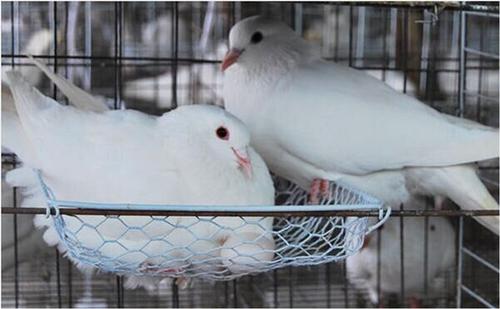当前位置:
X-MOL 学术
›
Mol. Reprod. Dev.
›
论文详情
Our official English website, www.x-mol.net, welcomes your feedback! (Note: you will need to create a separate account there.)
Transcriptome analyses to reveal the dynamic change mechanism of pigeon magnum during one egg‐laying cycle
Molecular Reproduction and Development ( IF 2.5 ) Pub Date : 2020-10-20 , DOI: 10.1002/mrd.23428 Lizhi Lu 1 , Xiaoqin Xu 2 , Xue Du 1 , Tao Zeng 1 , Tingbang Yang 2 , Yao Chen 2 , Zhengrong Tao 1 , Shengliang Zhong 3 , Jihui Wen 4 , Caiquan Zhou 2
Molecular Reproduction and Development ( IF 2.5 ) Pub Date : 2020-10-20 , DOI: 10.1002/mrd.23428 Lizhi Lu 1 , Xiaoqin Xu 2 , Xue Du 1 , Tao Zeng 1 , Tingbang Yang 2 , Yao Chen 2 , Zhengrong Tao 1 , Shengliang Zhong 3 , Jihui Wen 4 , Caiquan Zhou 2
Affiliation

|
We analyzed the transcriptome of pigeon magnum in three stages (C1: pre‐ovulation, C2: post‐ovulation, C3: 5–6 days after ovulation) to elucidate the molecular and cellular events associated with morphological changes during the laying cycle. We observed that C1 was highly developed, apoptosis rate was highest in C2, and C3 attained the smallest size. Through RNA‐sequencing, we obtained 54,764,938 (97.2%) high‐quality clean reads that aligned to 20,767 genes. Gene expression profile analysis showed the greatest difference between C1 and C3; 3966 differentially expressed genes (DEGs) were identified, of which 2250 genes were upregulated and 1716 genes were downregulated in C1. Gene Ontology and Kyoto Encyclopedia of Genes and Genomes analyses revealed that protein processing and transport activities were prominent in C1, and upregulated genes included those related to signal recognition particle (SRP), signal recognition particle receptor (SRPR), translocon, GRP78, RRBP1, TRAP, TRAM1, and OST. Egg white protein‐related gene expression was highest, with OVALY being the most highly expressed. In C2, apoptosis‐related gene expression was higher than in C1, and fatty acid metabolism was active, which may be correlated with magnum tissue regression. Collagen‐ and laminin‐related gene expression was prominent in C1 and C3, indicating roles in egg white protein generation and magnum reconstruction. PR gene expression was highest and exhibited drastic change in the three groups, indicating that PR and its regulation may be involved in changes in magnum morphology and function. Through the identification and functional analysis of DEGs and other crucial genes, this may contribute to understand the egg white protein production, magnum tissue regression, and magnum regeneration mechanisms.
中文翻译:

转录组分析揭示鸽大黄在一个产卵周期中的动态变化机制
我们分三个阶段(C1:排卵前,C2:排卵后,C3:排卵后 5-6 天)分析了鸽子的转录组,以阐明与产蛋周期形态变化相关的分子和细胞事件。我们观察到C1高度发达,C2的凋亡率最高,C3的尺寸最小。通过 RNA 测序,我们获得了 54,764,938 (97.2%) 个与 20,767 个基因对齐的高质量干净读数。基因表达谱分析显示C1和C3之间的差异最大;鉴定了3966个差异表达基因(DEGs),其中2250个基因在C1中上调,1716个基因下调。基因本体论和京都基因和基因组百科全书分析显示,蛋白质加工和运输活动在 C1、上调基因包括与信号识别粒子 (SRP)、信号识别粒子受体 (SRPR)、易位子、GRP78、RRBP1、TRAP、TRAM1 和 OST 相关的基因。蛋清蛋白相关基因表达最高,OVALY是表达量最高的。在C2中,凋亡相关基因表达高于C1,脂肪酸代谢活跃,这可能与枕大肌组织退化有关。胶原蛋白和层粘连蛋白相关基因表达在 C1 和 C3 中很突出,表明在蛋清蛋白生成和大块重建中的作用。PR基因表达量在三组中最高并呈现剧烈变化,表明PR及其调控可能参与了枕大肌形态和功能的变化。通过对DEGs和其他关键基因的鉴定和功能分析,这可能有助于了解蛋清蛋白的产生、大量组织退化和大量再生机制。
更新日期:2020-11-25
中文翻译:

转录组分析揭示鸽大黄在一个产卵周期中的动态变化机制
我们分三个阶段(C1:排卵前,C2:排卵后,C3:排卵后 5-6 天)分析了鸽子的转录组,以阐明与产蛋周期形态变化相关的分子和细胞事件。我们观察到C1高度发达,C2的凋亡率最高,C3的尺寸最小。通过 RNA 测序,我们获得了 54,764,938 (97.2%) 个与 20,767 个基因对齐的高质量干净读数。基因表达谱分析显示C1和C3之间的差异最大;鉴定了3966个差异表达基因(DEGs),其中2250个基因在C1中上调,1716个基因下调。基因本体论和京都基因和基因组百科全书分析显示,蛋白质加工和运输活动在 C1、上调基因包括与信号识别粒子 (SRP)、信号识别粒子受体 (SRPR)、易位子、GRP78、RRBP1、TRAP、TRAM1 和 OST 相关的基因。蛋清蛋白相关基因表达最高,OVALY是表达量最高的。在C2中,凋亡相关基因表达高于C1,脂肪酸代谢活跃,这可能与枕大肌组织退化有关。胶原蛋白和层粘连蛋白相关基因表达在 C1 和 C3 中很突出,表明在蛋清蛋白生成和大块重建中的作用。PR基因表达量在三组中最高并呈现剧烈变化,表明PR及其调控可能参与了枕大肌形态和功能的变化。通过对DEGs和其他关键基因的鉴定和功能分析,这可能有助于了解蛋清蛋白的产生、大量组织退化和大量再生机制。



























 京公网安备 11010802027423号
京公网安备 11010802027423号